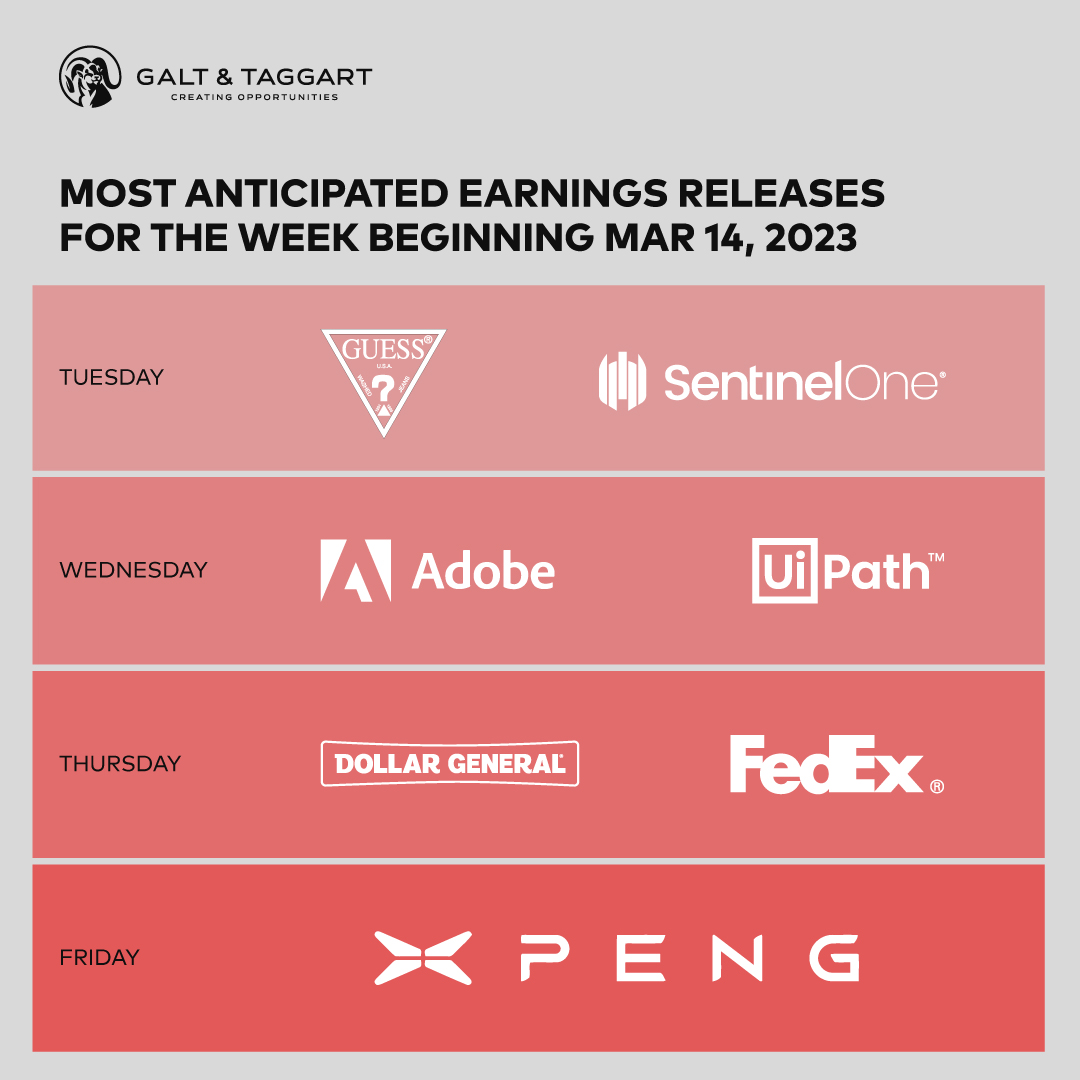Stocks ended their worst week so far this year with a fourth straight day of losses, and U.S. Treasuries and gold soared in a flight to quality, after federal regulators closed tech-focused lender Silicon Valley Bank on Friday in the biggest U.S. bank failure since 2008. Regional bank stocks plunged, with the top S&P regional banking ETF sinking 16% on the week, its worst showing since March 2020 at the start of the pandemic. The turmoil in bank stocks overshadowed the February jobs report, which offered some hints that inflation may be easing, as employee wages increased less than expected. For the week, the Dow Jones average fell 4.4%, the S&P 500 slipped 4.5%, and the Nasdaq Composite lost 4.7%.
News:
Largest bank failure since 2008: Silicon Valley Bank is no more. The tech industry’s go-to lender imploded in the second-largest bank failure in US history. After investor concerns about Silicon Valley Bank’s (SVB) solvency prompted a bank run, the Federal Deposit Insurance Corporation (FDIC) took control of customers’ deposits yesterday. The collapse happened fast. On Wednesday SVB said that it sold some of its assets at an almost $2 billion loss, sending investors and depositors into full freak-out mode. Its stock tanked over 60% the next day, and several prominent VC funds advised their portfolio companies to pull their deposits. By Friday, the 40-year-old bank was toast.
Why did things go south? SVB counted nearly half of all venture-backed US companies among its customers. That client list was a blessing when interest rates were low so startups were swimming in cash from VCs. Its deposits more than tripled between 2018 and 2021. But when interest rates began to climb last year, deposits shrank and so did the value of the bonds it bought with depositors’ cash. Short sellers have been sounding alarm bells about risks to smaller banks for some time now. But SVB was particularly vulnerable as it parked an unusually high share of customers’ funds in bonds and mortgage-backed securities.
SVB’s downfall sent shockwaves through the banking sector. But banks’ finances are in better shape now than they were in 2008, leaving experts optimistic that a full system meltdown is not on the horizon.
AI stocks fall: Artificial intelligence-linked stocks like C3.ai (AI), BigBear.ai Holdings (BBAI) and SoundHound AI (SOUN) slid on Thursday as the U.S. Chamber of Commerce laid out a report in which it called for regulation of AI. It's a notable development as the business lobbying group usually takes an anti-regulatory stance. The 14-page long report notes that AI is expected to increase global GDP by $13T by the end of the decade, but it will have an impact on areas such as national security and privacy, making it important to regulate in a responsible manner. "We must address these issues clearly so that we can shape appropriate responses and achieve our goal, which is to allow the innovation machine to continue to work its magic and improve society, while protecting the basic rights of citizens," the Chamber of Commerce declared. The EU is reportedly looking into similar plans.
Buffett doubles down on OXY: Berkshire Hathaway (BRK.A, BRK.B) has resumed purchases of Occidental Petroleum (NYSE:OXY), raising its stake in the oil company to about 22%, according to an SEC filing. That means the Warren Buffett-led conglomerate now owns 200.2M Occidental shares worth $12.2B based on Tuesday's $60.85 closing price, as well as $10B worth of preferred stock and related warrants. The holdings would also generate around $144M of annual dividends, following OXY's increased payout announced last month. Occidental, which is now among Buffett's top 10 holdings, has more than doubled in price last year and was the top-performing stock on the S&P 500.
The week ahead:
The week ahead is expected to see more drama over the collapse of SVB Financial Group (NASDAQ:SIVB) and the implications for the banking sector and venture capital ecosystem. Economic releases will also dominate the conversation about stocks next week with the next Federal Reserve meeting rapidly approaching. The headliner will be the consumer price index report for February with a slight moderation in the year-over-year inflation rate to +5.5% to +5.6%. Meanwhile, producer prices are forecast to decelerate to a 0.3% month-over-month gain from 0.7% in January.

